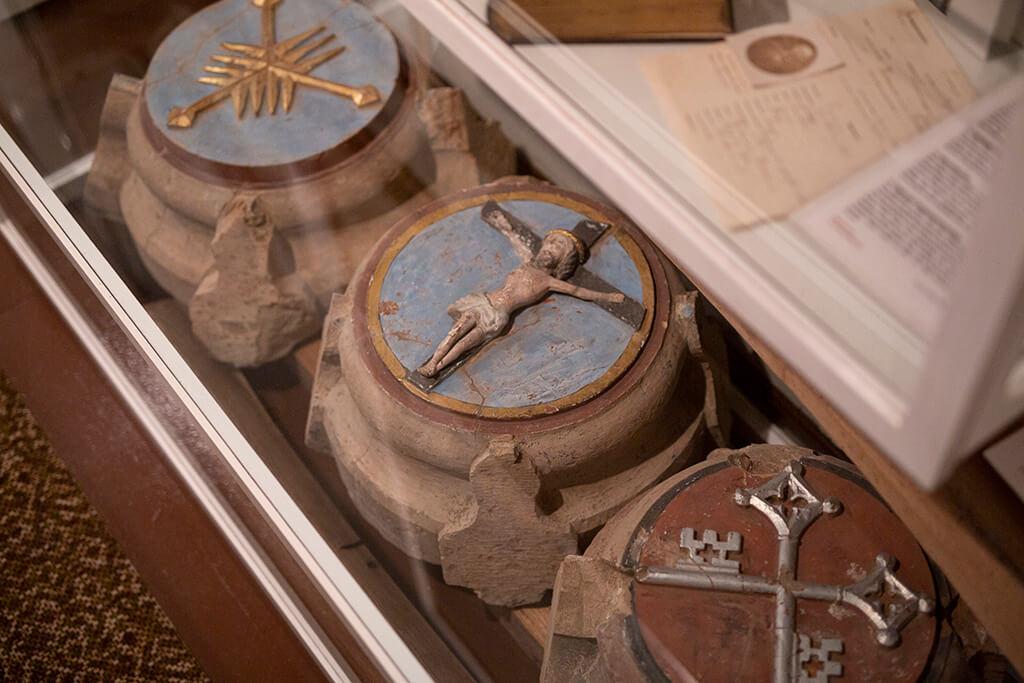
Heimathaus Levern
The religious life in Levern
With the subjugation of the Saxon king Widukind, Charlemagne (probably 747-814) brought Christianization to what is now northwest Germany. Here the diocese of Minden was already established around 800.


With the subjugation of the Saxon king Widukind, Charlemagne (probably 747-814) brought Christianization to what is now northwest Germany. Here the diocese of Minden was already established around 800.

The centrally located Levern church is one of the oldest in the diocese of Minden. It was first mentioned in a document of Bishop Milo (969-996). In 1227, the Minden bishop Konrad I founded a Cistercian monastery in Levern. During the Reformation, the monastery became a free secular convent. Collegiate and curia buildings were erected around the church. Levern became the spiritual center for the region. This was associated with great social and economic importance for the village. In the course of secularization, the convent was dissolved in 1810. In 1828, the former convent church was united with the parish church in elaborate reconstruction measures.
The 3D model shows the reconstruction of the Levern Collegiate Hill according to the Prussian original survey of the site (1836-1850). The centrally located Levern church is one of the oldest in the diocese of Minden. It was first mentioned in a document of Bishop Milo (969-996). In 1227, the bishop of Minden, Konrad I, founded a Cistercian monastery in Levern. During the Reformation, the monastery became a free secular convent. Collegiate and curia buildings were erected around the church. Levern became the spiritual center for the region. This was associated with great social and economic importance for the village. In the course of secularization, the convent was dissolved in 1810. In 1828, the former convent church was united with the parish church in elaborate reconstruction measures.
Some of the buildings marked in the 3D model are still preserved today. In the picture gallery you can find views of some of the monastery buildings. The western, non-designated building stock was destroyed during the battles shortly before the end of the Second World War on April 4, 1945. You can learn more about April 4, 1945 under item 4 in this app.

This book contains New Testament Bible passages for the sermon Sundays. Explanations and interpretations are given in places for the corresponding Bible passages. Thus the Protestant preachers on site were given aids for the services on the basis.
In addition to two Bible editions from 1648 and 1772, an epistle book written in Low German is kept in the Heimathaus. This was translated into Low German by Johann Spangenberg (1484-1550). It was intended to help Reformed preachers preach the gospel to the Low German-speaking population.
Johann Spangenberg belonged to Martin Luther's immediate circle. Born near Göttingen, Johann Spangenberg attended the university in Erfurt as a young man. Afterwards he came to Nordhausen in 1524 via stations in Stolberg and Hardegsen. Together with the local mayor Michael Meienburg, a confidant of Melanchton, he strove for a reorganization in Nordhausen in the spirit of the Wittenberg Reformation. In addition to the Epistle Book, he translated postils and songs into Low German, which had previously only existed in Latin.
The Epistelbuch preserved in the Heimathaus was published in Hamburg in 1599.

Heinrich Rust, whose first mother tongue is the Levern Platt, reads from the Epistle Book (Luke 6, 36-41)
</Text>
Jewish citizens settled in Levern from 1813 at the latest. In 1873 a synagogue was built in the village. In 1880 the Jewish religious community comprised 60 people. At the end of the 19th century the Jewish community established its own cemetery outside Levern in Niedermehnen. With the burgeoning National Socialism, all Jews from Levern moved to larger cities or emigrated overseas by 1938. Even before the Reichsprogromnacht, a student set fire to the synagogue, of which only the foundation walls remained.
After the Second World War, the ruins of the synagogue were sold and converted into a residential building. The cemetery was restored about 10 years after the end of the war and is now considered a memorial. The Torah scroll from the former synagogue, stored in an attic during the war, was preserved in the Heimathaus.